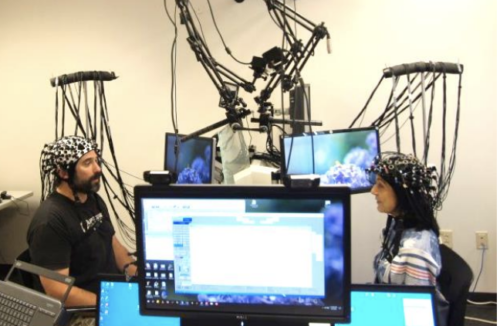You know that feeling when you’re having a really good conversation with someone, and it seems like your brains are on the same wavelength? Well, there’s actually a term for that. Neural coupling is the mechanism by which we can measure synchronization in brain activity between two individuals. In a study done by the Yale School of Medicine, neuroscientist Joy Hirsch explores the phenomenon, and how it differs when there is high versus low socioeconomic disparity in a dyad, a group of two individuals.
The Hirsch lab has developed a novel technique for brain imaging known as functional near infrared spectroscopy (fNIRS), which uses wearable headpieces that can sense brain activity of multiple users. This sharply contrasts the limitations of functional magnetic resonance imaging (fMRI), which is much less convenient in gaging human interactions. fNIRS allows neuroscientists to engage with the brain during social interactions that underpin the majority of our daily lives. Their revolutionary research paves the way for future studies in two person neuroscience.
The social implications of her study are quite interesting. The dorsolateral prefrontal cortex, which is hypothesized to regulate the deliberation of our speech, has significantly more activity in high disparity dyads. Coherence, or the measurement of neural coupling, was also greater in high disparity dyads. What are the implications? “We as humans are wired to actually manage our disparity in a positive way. We can, based on our neurophysiology, maintain or create positive experiences with people who are different from you. We have the neuro-ability to embrace diversity,” Hirsch proclaimed with beaming optimism.

